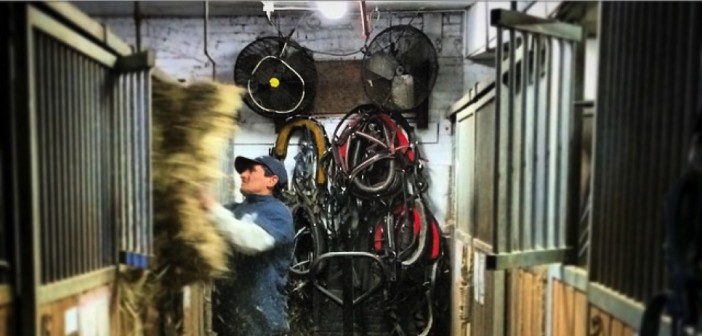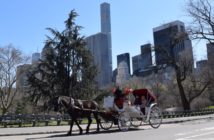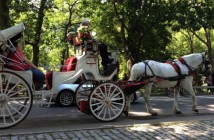Carriage horses in New York City benefit from the latest and greatest in horse care.
All NYC carriage horses receive preventive veterinary care. Unlike other horses who only see the vet when they are sick, NYC carriage horses see the vet mostly when they are healthy! By law, NYC carriage horses are required to receive a full veterinary health exam twice a year. They also must see the vet before going on vacation and upon their return. Therefore, every carriage horse will be examined by a licensed veterinarian at least two – but usually four – times a year. This level of veterinary care and scrutiny is unsurpassed except by high-level equestrian sports. When, on rare occasions, horses get sick, they are treated by veterinarians with decades of experience, and are even sometimes referred to and treated by specialists at Cornell University and other top equine hospitals.
NYC carriage horses, although they live in 19th– and early 20th– century buildings originally built to house horses, live in stables that have all the “modern” conveniences. All NYC carriage horses now live in box stalls, which allow the horses to turn around and lie down comfortably. Most stables have state of the art automatic waterers, providing unlimited access to water while the horses are at home. Traditional ventilation from lots of windows on multiple sides of the stables has been updated with new ventilation systems, including exhaust fans, circulating fans, and even a misting system, which can lower the temperature of the 52nd St. stables by 10 or 15 degrees below ambient temperature in the summertime.
All NYC carriage stables are equipped with high-volume sprinkler systems, which are all up to code and are inspected regularly. Carriage horses enjoy a far greater level of fire protection than almost any other horses in the country; even the most elite show horse barns usually do not have sprinkler systems. The NYFD can be at any of our stables in a matter of minutes.
Today’s modern carriages, while based on 19th century predecessors, have bodies made of lightweight fiberglass, rubber tires on ball-bearing wheels, new reflective materials, and either incandescent or LED lighting for night driving.





8 Comments
lck4ma
npa8zo
tyo23o
59u99d
1kzm9g
y8h5t1
xxyjms
1s498o